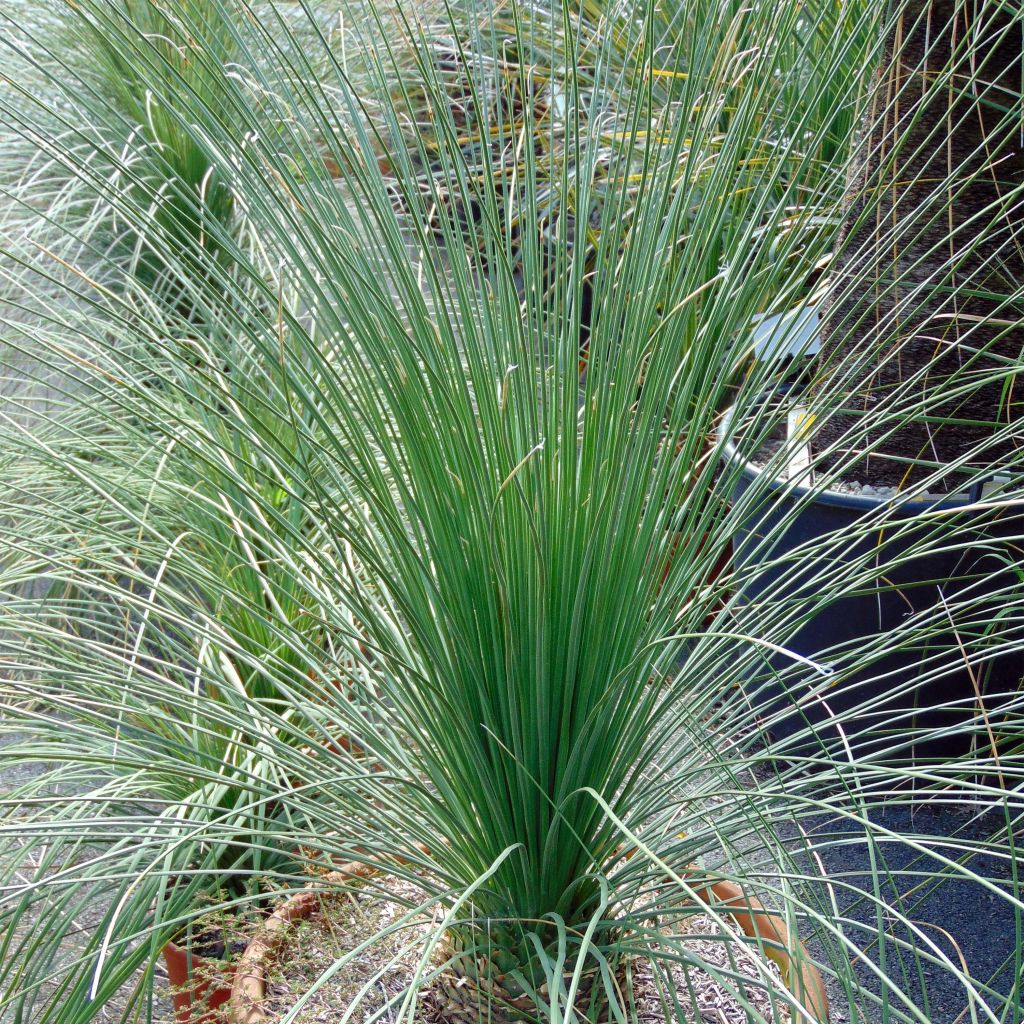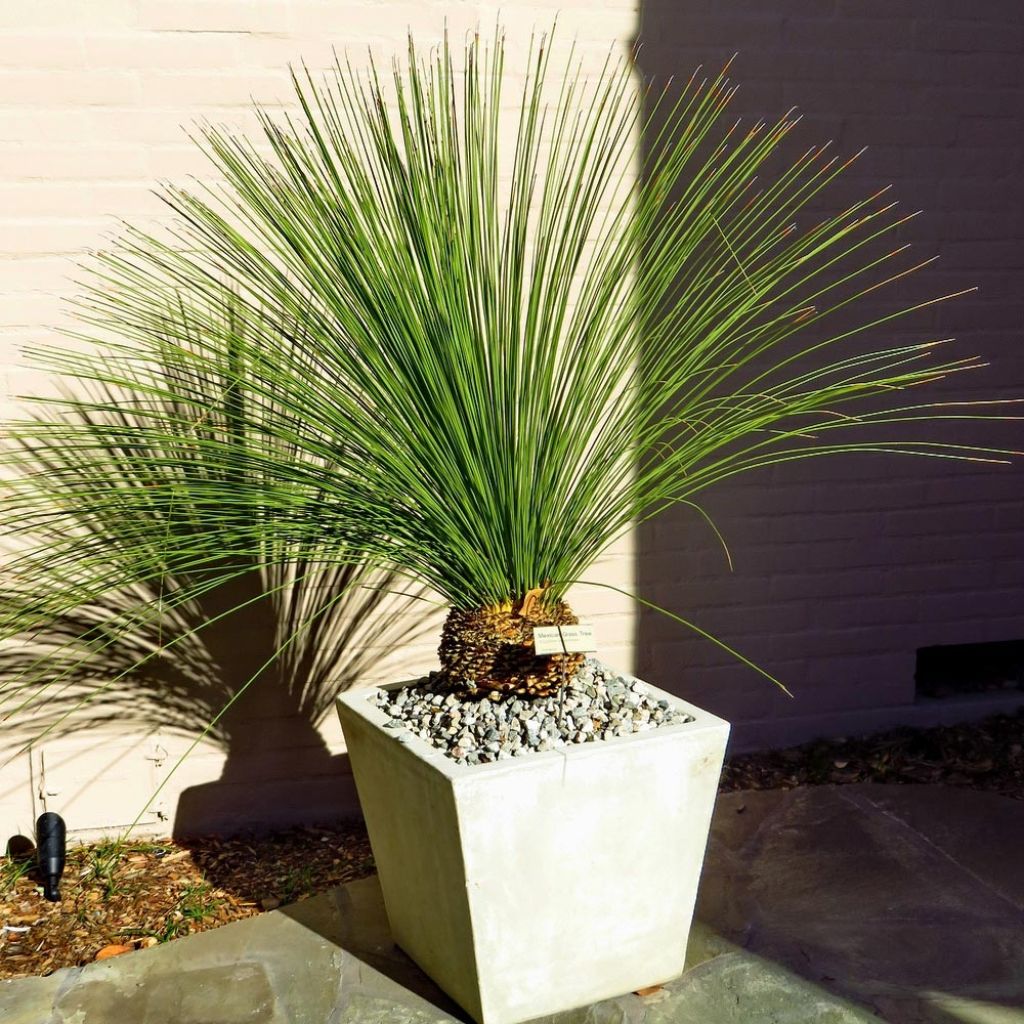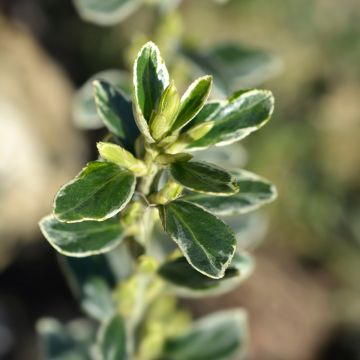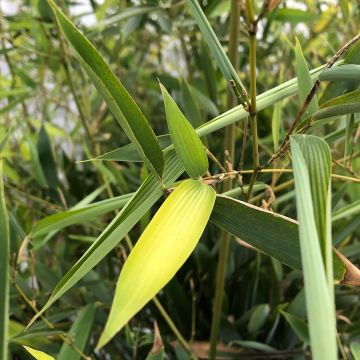

Dasylirion longissimum - Sotol


Dasylirion longissimum - Sotol


Dasylirion longissimum - Sotol


Dasylirion longissimum - Sotol


Dasylirion longissimum - Sotol


Dasylirion longissimum - Sotol


Dasylirion longissimum - Sotol


Dasylirion longissimum - Sotol


Dasylirion longissimum - Sotol


Dasylirion longissimum - Sotol


Dasylirion longissimum - Sotol
Dasylirion longissimum - Sotol
Dasylirion longissimum
Mexican Grass Tree
very pleased with my order, ultra-fast delivery. The young plant is superb, I have just planted it, it looks magnificent.
Veronique, 28/10/2022
Special offer!
Receive a €20 voucher for any order over €90 (excluding delivery costs, credit notes, and plastic-free options)!
1- Add your favorite plants to your cart.
2- Once you have reached €90, confirm your order (you can even choose the delivery date!).
3- As soon as your order is shipped, you will receive an email containing your voucher code, valid for 3 months (90 days).
Your voucher is unique and can only be used once, for any order with a minimum value of €20, excluding delivery costs.
Can be combined with other current offers, non-divisible and non-refundable.
Home or relay delivery (depending on size and destination)
Schedule delivery date,
and select date in basket
This plant carries a 24 months recovery warranty
More information
We guarantee the quality of our plants for a full growing cycle, and will replace at our expense any plant that fails to recover under normal climatic and planting conditions.
Would this plant suit my garden?
Set up your Plantfit profile →
Description
The Dasylirion longissimum is an evergreen tree-like plant related to yuccas and agaves. Its remarkably architectural silhouette creates impact in a mineral, dry garden, or even a terrace or patio when placed in a pot. This fascinating plant creature carries a multitude of long, flexible leaves at the top of a short trunk (stipe), reminiscent of reeds, radiating from the centre of the rosette, which eventually forms a large sphere with a diameter of 1.20m (3 ft 11 in). Mature specimens bloom spectacularly, in the form of a huge flower spike that can exceed 4m (13 ft 1 in) in height. It is an easy plant to grow in arid, poor, even limestone soil. Its hardiness depends primarily on soil drainage.
Originating from rocky hills and mountainous areas in northern Mexico, Arizona, and Texas, the Dasylirion longissimum is capable of withstanding temperatures around -8°/-10C in well-drained soil in gardens subjected to winter rains, and tolerates long periods of summer drought. It is a rhizomatous plant belonging to the agave family, slow-growing in dry soil but faster in moist soil. When young, the Dasylirion forms a dense, shaggy ball. After many years, it can develop a trunk 1m (3 ft 4 in) to 1.50m (4 ft 11 in) in height, covered with remnants of old leaves, which are brown in colour. It often ends up lying down without stopping its growth. The trunk carries a large spherical crown, 1m (3 ft 4 in) to 1.50m (4 ft 11 in) wide, composed of several hundred thin, flexible, spineless, dark green leaves. Flowering occurs after 10 to 15 years of cultivation, in summer. A slender, erect flower spike emerges from the centre of the rosette, among the leaves. The small yellowish flowers are tightly packed along the spike and remain on the plant for a long time, often until winter. Male plants are distinct from female plants. When watered during the summer, this Dasylirion shows spectacular growth. Careful consideration should be given to the placement of this plant, as its fragile root system does not tolerate disturbance and transplanting very well.
The Dasylirion longissimum requires plenty of sunlight and a very well-drained, even poor and dry soil. It particularly fears heavy, waterlogged soils in winter. Perfect on a large, arid slope, at the top of a large exotic or contemporary rockery, or even by a swimming pool if the soil is prepared to accommodate it. This large plant looks magnificent when accompanied by Cerastostigma plumbaginoides, Delosperma, or even a dry grass meadow called Zoyzia tenuifolia, the Mascarene grass. It can also be planted with agaves, prickly pears, fairly hardy candle cacti (Cleistocactus strausii, Cylindropuntia imbricata), and equally spectacular and frugal shrubby aloes. It is well-suited for container cultivation, which provides protection from cold and humidity in winter.
Dasylirion longissimum - Sotol in pictures






Plant habit
Flowering
Foliage
Botanical data
Dasylirion
longissimum
Agavaceae (Asparagaceae)
Mexican Grass Tree
North America
Planting and care
To successfully plant Dasylirion longissimum, choose a sunny and sheltered spot, mainly if your garden is in a borderline hardiness zone. Plant in the spring and ensure the soil is well-drained and moisture-free, with a preference for rocky, sandy, or dry soil. Established specimens can withstand brief frosts around -12/-15°C (10.4/5°F). Protect young plants from winter rain as they are more delicate.
Dasylirion growth is slow but can be boosted by generous watering and fertile soil. Autumn planting is preferred for mild climates, especially in hot and dry summers. When transplanting, remove the root ball carefully without damaging it to avoid harming the plant. Dasylirion is not tolerant of heavy, moist soils, particularly when combined with cold weather. Placing the plant in a large rock garden, on a slope, a raised bed with enriched gravel soil, or a rocky embankment is best. The soil pH should be slightly acidic, sandy, rocky, or chalky. The plant can tolerate poor soil, but growth is faster in fertile soil.
Monitor watering for the first two years, particularly during hot and dry periods. Faded stems should be removed for a healthy plant. Plant Dasylirion acrotrichum in spring in a very sunny and sheltered position if your garden is in a borderline hardiness zone. A well-established specimen will withstand brief frosts of around -12/-15°C (10.4/5 °F) in perfectly drained soil, even very dry, rocky or sandy. Protect young plants from winter rain, as they are more fragile than well-established specimens. Its growth is relatively slow, boosted by generous but spaced waterings in summer and fertile soil. In mild climates, prefer autumn planting, especially in hot and dry summers. Transplanting requires some precautions: remove the root ball without damaging it, taking care of the roots, at the risk of condemning the plant! This species dreads heavy and moist soils, especially when combined with cold. Ideally, position the plant in a large rock garden, on a slope, raised bed with enriched gravel soil, or on a rocky embankment.
On the other hand, it is not very demanding on soil pH, which can be slightly acidic, sandy, rocky, or even chalk. Dasylirion tolerates poor soil, but its growth will be somewhat faster in slightly fertile soil. Monitor watering during the first 2 years, especially in hot and dry periods. Remove faded stems.
Your Dasylirion is superb, but it doesn't flower? Probably because it is too young, or has only been in your garden for 3 or 4 years. Indeed, it seems that this plant takes time to establish itself and only flowers after 10 to 15 years, mainly in warm areas. Then, depending on the sunlight and climate, it will flower every year, or every two or three years. If the plant benefits from automated drip irrigation in summer, its growth will be boosted and 5-year-old rosettes will be able to flower!
Division:
By sowing in spring.
Planting period
Intended location
Care
Planting & care advice
-
, onOrder confirmed
Reply from on Promesse de fleurs
Similar products
Haven't found what you were looking for?
Hardiness is the lowest winter temperature a plant can endure without suffering serious damage or even dying. However, hardiness is affected by location (a sheltered area, such as a patio), protection (winter cover) and soil type (hardiness is improved by well-drained soil).

Photo Sharing Terms & Conditions
In order to encourage gardeners to interact and share their experiences, Promesse de fleurs offers various media enabling content to be uploaded onto its Site - in particular via the ‘Photo sharing’ module.
The User agrees to refrain from:
- Posting any content that is illegal, prejudicial, insulting, racist, inciteful to hatred, revisionist, contrary to public decency, that infringes on privacy or on the privacy rights of third parties, in particular the publicity rights of persons and goods, intellectual property rights, or the right to privacy.
- Submitting content on behalf of a third party;
- Impersonate the identity of a third party and/or publish any personal information about a third party;
In general, the User undertakes to refrain from any unethical behaviour.
All Content (in particular text, comments, files, images, photos, videos, creative works, etc.), which may be subject to property or intellectual property rights, image or other private rights, shall remain the property of the User, subject to the limited rights granted by the terms of the licence granted by Promesse de fleurs as stated below. Users are at liberty to publish or not to publish such Content on the Site, notably via the ‘Photo Sharing’ facility, and accept that this Content shall be made public and freely accessible, notably on the Internet.
Users further acknowledge, undertake to have ,and guarantee that they hold all necessary rights and permissions to publish such material on the Site, in particular with regard to the legislation in force pertaining to any privacy, property, intellectual property, image, or contractual rights, or rights of any other nature. By publishing such Content on the Site, Users acknowledge accepting full liability as publishers of the Content within the meaning of the law, and grant Promesse de fleurs, free of charge, an inclusive, worldwide licence for the said Content for the entire duration of its publication, including all reproduction, representation, up/downloading, displaying, performing, transmission, and storage rights.
Users also grant permission for their name to be linked to the Content and accept that this link may not always be made available.
By engaging in posting material, Users consent to their Content becoming automatically accessible on the Internet, in particular on other sites and/or blogs and/or web pages of the Promesse de fleurs site, including in particular social pages and the Promesse de fleurs catalogue.
Users may secure the removal of entrusted content free of charge by issuing a simple request via our contact form.
The flowering period indicated on our website applies to countries and regions located in USDA zone 8 (France, the United Kingdom, Ireland, the Netherlands, etc.)
It will vary according to where you live:
- In zones 9 to 10 (Italy, Spain, Greece, etc.), flowering will occur about 2 to 4 weeks earlier.
- In zones 6 to 7 (Germany, Poland, Slovenia, and lower mountainous regions), flowering will be delayed by 2 to 3 weeks.
- In zone 5 (Central Europe, Scandinavia), blooming will be delayed by 3 to 5 weeks.
In temperate climates, pruning of spring-flowering shrubs (forsythia, spireas, etc.) should be done just after flowering.
Pruning of summer-flowering shrubs (Indian Lilac, Perovskia, etc.) can be done in winter or spring.
In cold regions as well as with frost-sensitive plants, avoid pruning too early when severe frosts may still occur.
The planting period indicated on our website applies to countries and regions located in USDA zone 8 (France, United Kingdom, Ireland, Netherlands).
It will vary according to where you live:
- In Mediterranean zones (Marseille, Madrid, Milan, etc.), autumn and winter are the best planting periods.
- In continental zones (Strasbourg, Munich, Vienna, etc.), delay planting by 2 to 3 weeks in spring and bring it forward by 2 to 4 weeks in autumn.
- In mountainous regions (the Alps, Pyrenees, Carpathians, etc.), it is best to plant in late spring (May-June) or late summer (August-September).
The harvesting period indicated on our website applies to countries and regions in USDA zone 8 (France, England, Ireland, the Netherlands).
In colder areas (Scandinavia, Poland, Austria...) fruit and vegetable harvests are likely to be delayed by 3-4 weeks.
In warmer areas (Italy, Spain, Greece, etc.), harvesting will probably take place earlier, depending on weather conditions.
The sowing periods indicated on our website apply to countries and regions within USDA Zone 8 (France, UK, Ireland, Netherlands).
In colder areas (Scandinavia, Poland, Austria...), delay any outdoor sowing by 3-4 weeks, or sow under glass.
In warmer climes (Italy, Spain, Greece, etc.), bring outdoor sowing forward by a few weeks.

















































